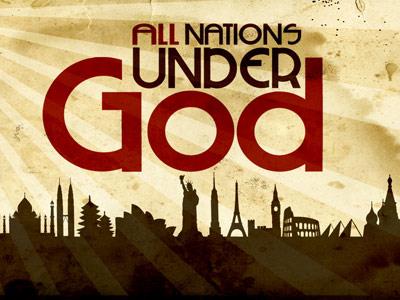-
Jesus Loves Lingayats
Contributed by B. D. B Moses on Nov 28, 2017 (message contributor)
Summary: Our Commission from the Lord is to “go and make disciples” of all nations (peoples). Jesus loves the Lingayats and has a desire for the Lingayats to know the truth of His saving power.
The Lingayats are the twelfth largest people group of India and the largest people group of Karnataka. Lingayats number 9 million people in the Karnataka state alone. A Lingayat is one who wears the Linga, a small spherical object that the Lingayat believes represents God. Lingayats are also known as Virashaiva, which means a devout Shiva worshiper. Besides Karnataka, there are Lingayats in Tamil Nadu, Maharashtra and Andrah Pradesh.
THE HISTORICAL BACKGROUND TO THE LINGAYAT PEOPLE
The Lingayat community had its origin in the 12th century with the birth of Basava. Shivaism (the worship of the d Shiva) was the dominate religion. The Virashaiva faith (a sect of Shiva worship) was in existence before this time, but Basava not only revived it, but also inspired a whole new religion.
King Bijjala ruled the Chalukyan throne from 1157 to 1167. It was a time of discrimination, prejudice and class distinctions. Those of high caste treated the lower caste as less than human beings. The low caste people held to the belief that their plight was a result of sin committed by them in their past lives. These low caste people thought that if they tried to improve their plight that they were committing sin. Basava led the reform movement against these social injustices.
Basava was born in 1131 AD, in the Bagalkot district, of the Karnataka state, to orthodox Shiva Brahmin parents. Even as a boy Basava was disgusted with the polytheistic worship he saw. He opposed caste hierarchy and society divisions. At the age of 8 he was to undergo the Brahmin sacred thread ceremony. He refused to wear it, perceiving it as discrimination against other castes and against women who were not permitted to wear the thread. Over this refusal, Basava left home to a nearby religious center called Kudala Sangama. It was here that Basava developed his ideas of social reform. Here at Kudala Sangama were devotees of the Hindu god Shiva.
Basava became the Prime Minister of King Bijjala’s Chalukyan empire. In this position as Prime Minister Basava’s ideas of social reform had a far reaching influence. The platform of this new reform movement was the Anubhava Mantapa (Hall of Experience) in Kalayana. Besides introducing religious ideas, social equality was upheld. Here high caste people would dine with untouchables. A marriage ceremony was arranged between a Brahmin bride and low caste untouchable groom. This marriage infuriated the traditional society.
At the pressure from the people, King Bijjala punished the groom, and the fathers of the bride and groom by gouging out their eyes, and dragging them to death behind elephants in public view. Basava was banished from Kayla and returned to Kudula Sangama where he died in 1167.
The Lingayat movement lost its influence after this persecution. Soon after this the Chalukyan empire fell to Muslim invasion. As time passed the Lingayat movement regained influence. Today the Lingayats are the largest single community in Karnataka. Lingayats number 9 million of the 50 million people in the Karnataka State. Lingayats hold the greatest political influence of any community in Karnataka.
SACRED SCRIPTURE- VACHANAS
The Sacred texts for the Lingayats are the Vachanas. The Vachanas are written in the Kannada language. This itself is a departure from traditional Hindu sacred literature written in Sanskrit, a language for the priestly community. The Vachanas were written for the common man to read and understand.
The Vachanas contain devotional sayings in the form of prose and poetry. The word Vachana means “saying.” There are 4 major saints who wrote the major Vachanas of the Lingayats. The most significant of these were written by Basava. Lingayats reject the traditional Hindu Vedas (oldest Hindu sacred literature) as scriptures. The following is an excerpt from the Vachanas of Basava:
“What sort of religion can it be without compassion? Compassion must be shown to all living things; Compassion is the root of all religious faiths: The Lord (Of the meeting Rivers) won’t accept what is not like this.” - Basava
CASTE
Condemning caste discrimination became the central issue in the Lingayat movement. Basava regarded all human persons as children of one and only one God. Basava taught that no one is low or high-born, but rather all who work for the welfare of all living beings belong to well-born category. Basava tried to eradicate untouchability, by giving freedom of worship to low caste people. Wearing the Linga was open to all, and in a way, a symbol of social equality. “All have the same birth out of the same womb,” Basava said.
“To me all the lovers of God are one, Such is my faith. There is not the slightest doubt in me about this.
There is no high-born for me or low-born” Basava
LINGAYAT CONCEPT OF GOD
Lingayats hold to a kind of monotheism and believe that Shiva alone is God. Lingayats conceive God to be a power or cosmic energy. They encouraged the direct worship of God without the aid of a priest. God, for the Lingayat, is believed to be protector and creator of the universe. Christian writer C. D. Uttangi said, “Lingayatism revolutionized the idea of worshipping God in idolatrous India.” Basava taught that as a faithful wife has one husband, the devotee who believes must have but one God.

 Sermon Central
Sermon Central


